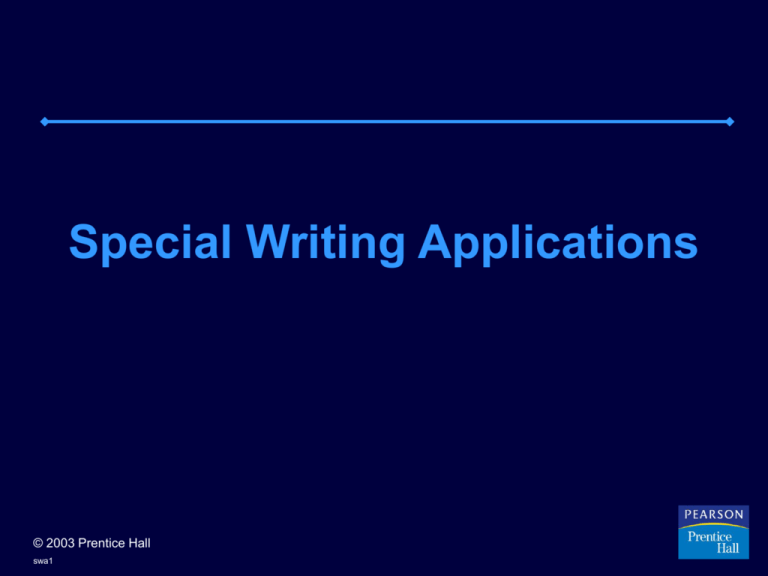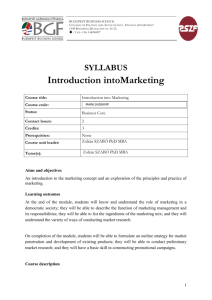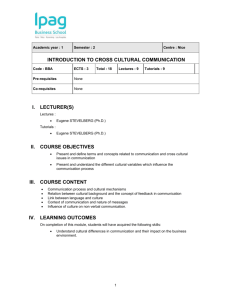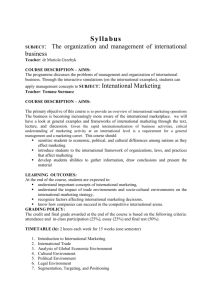Writing_Special_Writing_Applications
advertisement

Special Writing Applications © 2003 Prentice Hall swa1 QUESTIONS FOR AN INTERPRETATION PAPER • What is the theme of the work? • How are the parts of the work related to the theme? • If patterns exist in various elements of the work, what do they mean? • What message does the author covey through the setting, characters, narrator, etc? • What symbols are used and what do they mean? • Why is the ending what it is? © 2003 Prentice Hall swa2 STRATEGIES FOR TAKING ESSAY TESTS • Do NOT start writing immediately. • If the test has more than one question, read them all at the start. You will know what to expect and how to budget your time. If you have a choice, select questions about which you know the most and can work with the best. • Reread each question, then underline the cue and key words to determine exactly what the question asks for. • Use the writing process as much as possible within the time constraints. For a one-hour test, take 10 minutes to jot down preliminary ideas before you write and save at least 10 minutes at the end to revise and edit. • Organize and develop your answer to provide what the questions cue and key words ask for. © 2003 Prentice Hall swa3 SAMPLE FORMAT: THE MEMO Routing information: Date 26 February, 2003 “To” line To: Daniel Mason, Sales Representative Sender From: Patricia Young District Manager Subject line Subject: Sales Meeting, March 3, 2003 © 2003 Prentice Hall swa4 SAMPLE FORMAT: THE MEMO (con’t) Message: I’m calling a special sales meeting for 10 am Monday, March 3, in the orange conference room. Please be prepared to speak to the following concerns: • advertising budget for 2004 • incentives for retailers • flagging sales of YZ toys If there are any other issues, please notify me by Friday. © 2003 Prentice Hall swa5 SAMPLE FORMAT: THE MEMO (con’t) Distribution: Dist: Accounting Advertising NOTE: Titles and departments can be omitted from routing information when writer and recipient know each other and correspond frequently. © 2003 Prentice Hall swa6 SAMPLE FORMAT: EMAIL MESSAGE Header information: To: emilyjackson@mail.net From: Arnold Peale <apeale@mail.net> Subject: Sales Meeting, March 3, 2003 Cc: jasonc@mail.net;betho@mail.net Bcc: X-Attachments: NOTE: Attachments line will list file names of any electronic documents sent with the message. © 2003 Prentice Hall swa7 SAMPLE FORMAT: EMAIL MESSAGE (con’t) Body / Message information: Salutation Ms. Jackson, Message I’m calling a special sales meeting for 10 am Monday, March 3, in the orange conference room. Please be prepared to speak to the following concerns: •advertising budget for 2004 •incentives for retailers •flagging sales of YZ toys © 2003 Prentice Hall swa8 SAMPLE FORMAT: EMAIL MESSAGE (con’t) Closing and signature information: Signature Arnold Peale Sales Director ABC Company (555) 233-1234 NOTE: The closing and signature will depend on the formality of the message. For professional messages, include your title and organization. © 2003 Prentice Hall swa9 EMAIL MESSAGE PROTOCOL • Use short block paragraphs; long paragraphs are difficult to read on screen. Double-space between paragraphs but don’t indent. • Avoid “Reply All” when responding to messages received. Respond to everyone on an email list only when you think all will be interested in your comments. • Make sure attached files are in a format your audience can view and that you have scanned them for viruses. • Use asterisks, dashes, and capital letters to emphasize text. © 2003 Prentice Hall swa10 CUT THE LINE BY THOMAS HART BENTON © 2003 Prentice Hall swa11 SPRINGBOARD FOR WRITING Thomas Hart Benton (1889-1975) was one of many American artists to survive the Great Depression with support from various federal programs such as the Federal Art Project of the Works Project Administration (WPA: 1935-39), which provided work for thousands of artists. Fiercely patriotic, Benton rejected urban life, international politics and modernism in painting and celebrated the raw energy and limitless potential of the American people in his work. © 2003 Prentice Hall swa12 YOUR MISSION You are the president of a public relations firm and you have been approached by an officer ( N. Shuvvel) in the US Navy. He wants to create a public relations campaign to improve the image of the Navy and increase enlistment. He asks if you can incorporate this scene from Benton’s mural into your campaign. © 2003 Prentice Hall swa13 PLANNING AND SHAPING • Examine the scene carefully. List as may details from the picture as you can. What do you notice about colors, lines, the relationships among the objects portrayed? • What do these details suggest about the American Navy? State this impression in a single sentence. © 2003 Prentice Hall swa14 DRAFTING Draft a letter to Mr. Shuvvel responding to his suggestion. Can you use the painting? Do you like his idea? Be sure to include an analysis of Benton’s painting to support your claims. If you like the idea you might go on briefly to suggest how this painting might fit into a larger campaign. If you don’t like it, explain why (tactfully) and suggest alternatives. © 2003 Prentice Hall swa15 REVISING • Will your letter meet Mr. Shuvvel’s needs? Have you stated what the letter is about in the first paragraph? • What guided your decisions about the sequence of the remainder of the letter? • Is your style clear, direct and concise? Can you cut any words without losing important detail? • Have you used standard business letter format? © 2003 Prentice Hall swa16 EDITING • Review your letter for accuracy and for correctness of sentence structure, grammar, spelling and punctuation. • Make any necessary changes. © 2003 Prentice Hall swa17








